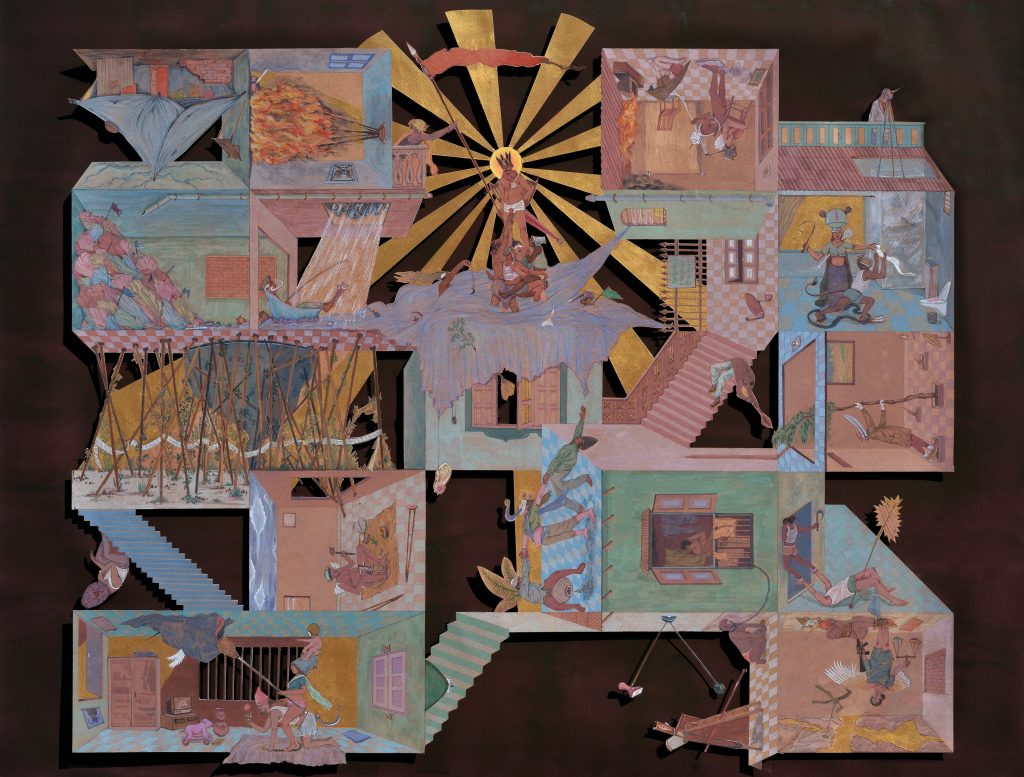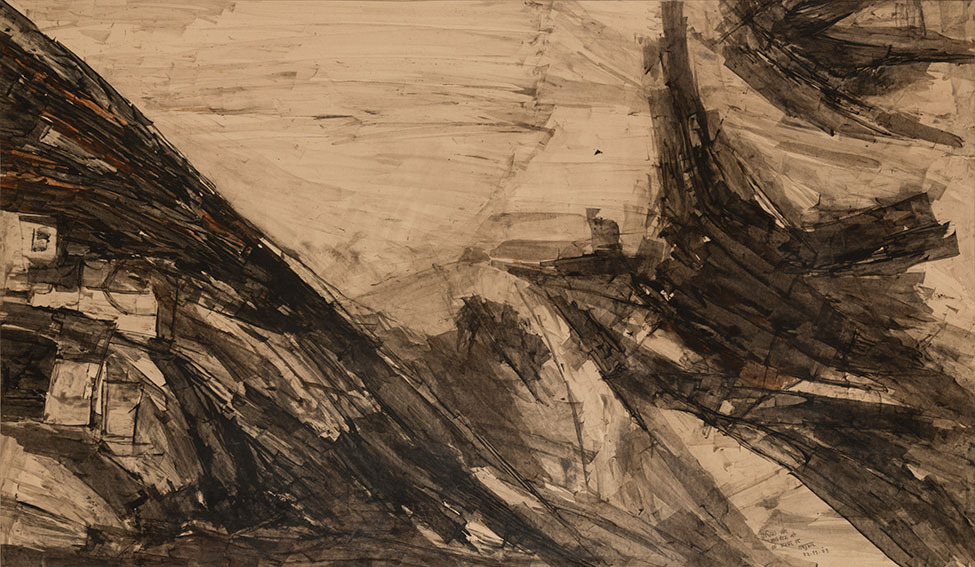Blogs
On Man and Myth
Mehreen Yousaf
Looking at the use of myths in the works of artist and IARF grantee, Yogesh Ramakrishna.
In June of 2021, MAP in partnership with 1Shanthiroad Studio launched a relief fund to support artists and their work during the difficult times posed by the Covid 19 pandemic. Open to all practising artists in India, the relief fund received an overwhelming response with over 1000 applications. Twenty artists were selected by an independent jury comprising Paula Sengupta, Radha Mahendru, Indrapramit Roy and Suresh Jayaram. The jury members also offered mentorship conversations to the artists.
In an attempt to showcase the exciting work that was achieved under this grant, we have placed the grantees and their artworks in conversation with each other, to respond to and facilitate a conversation around the common themes or concerns addressed in their art.
The world is a symbolic reality – it requires interpretation and triggers many different ways of seeing. Myths help build this symbolic reality, they hold the tension of opposites – good and evil, birth and death, us and them – creating dualities for us to make sense of the world. Artist Yogesh Ramakrishna’s practice leans on investigating the application of myths: how they are created, sustained and reinforced today, and their ability to help simplify a reality that may be too complex to grasp.
The artist states that his inquiry starts from these questions – what is the boundary between truth and myth? Does internalising myths cause us to self-police, or call a halt on our own thoughts? Are our present actions serving to carry forward certain myths? Outside of interrogating himself on these grounds, the artist relies on interactions with other people, oral histories of communities and ethnographic observations to understand the nature and content of myths.
Based on their research, Ramakrishna imagines increasingly dramatised worlds that accentuate the application of these myths in contemporary India, and further questions their role in perpetuating violence and intolerance in the country.

Some people are not fit to rule themselves – II, Yogesh Ramakrishna, 2021, Image courtesy of the artist
Some people are not fit to rule themselves – II takes two forms – a watercolour and gouache painting, and a video derived from it. As the viewer tries to zoom into any one corner of the painting, they’re called to turn their gaze to another. The haphazard cross-section of the house depicted brims with chaos – fires ablaze, jumbled floors, masked figures, unusual apparatus, a large fold of cloth spilling over, imitating water. In the centre, stands a crowned, underwear-laden king, a pole in his hand with a billowing saffron flag affixed. At his feet are people blindfolded, wearing tinfoil hats, all clenching on and enmeshed as they fortify the King’s bearing.
It is sharp how the artist has used age-old myths to expose our urge to succumb to the mythic appeal of everything – from our products, to our news, celebrities and politicians. Ramakrishna believes that identifying myths at play and understanding how it de-historicises and empties reality, can help us focus attention on what’s truly going wrong and reverse it.
Experimenting with a wide range of mediums, Ramakrishna uses video as a format to further animate his works and add another level of perspective. The accompanying video work for Some people are not fit to rule themselves – II has an almost eerie effect. As the artist takes us through different sections of the work, they use the affordances of the format to amplify the scenes depicted.
Yogesh Ramakrishna, Some people are not fit to rule themselves – II, 2021, Video courtesy of the artist
As with many works conceptualised and created during the pandemic, COVID 19 features as an aggravator – of intolerance and instability, signalling an impending doom. The pandemic was breeding ground for many deep-seated myths, conveniently employed to divert attention from the bleak realities of poor public health infrastructure, ill-preparedness and lack of access to any resources for a vast majority of the nation’s population. Ramakrishna’s work addresses these myths, and makes us see the spectacle and its actors for what it is.
Mehreen Yousaf is an Events Coordinator at MAP. She loves listening to music and curating playlists for her friends.








